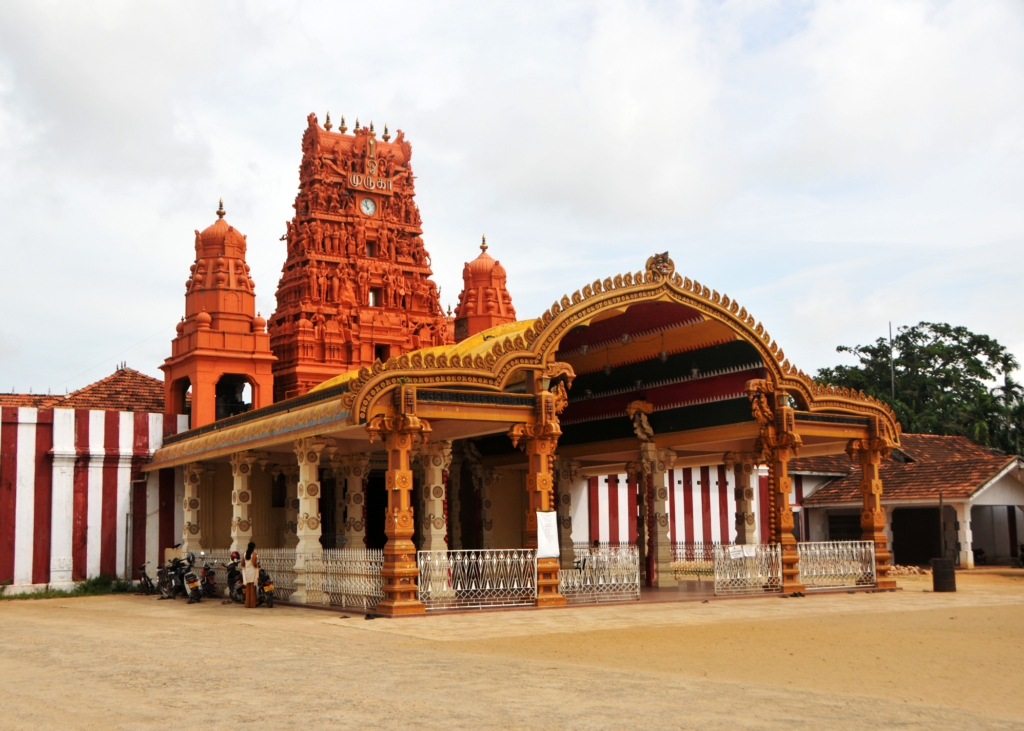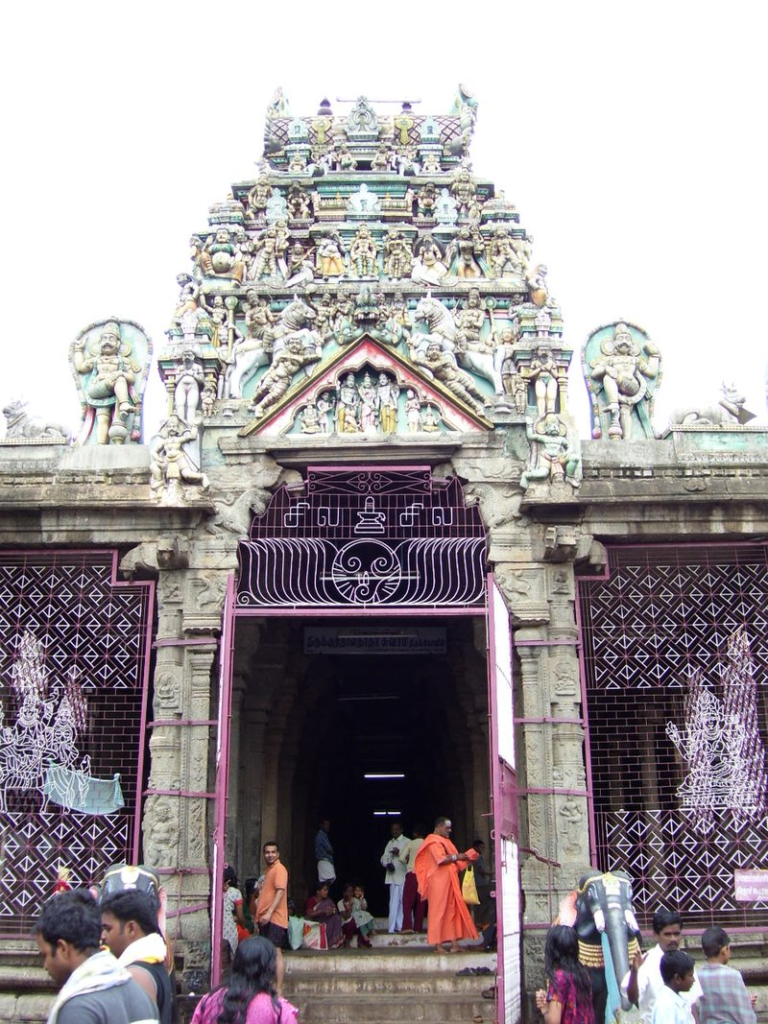
When he danced, the entire universe danced. He is the cosmic dancer; he is the Lord of dance, Nataraja. Dance is one of the Pancha Kriyas done by Shiva in form of Nataraja. Kriya is action, and dance is one of the actions done to balance the rhythm and flow of the Universe by the lord. It is through dance that he controls the elements of life, space, time and energy thus leading to sustainability of the universe.
The Temple is a place wherein these Kriyas are sustained and when one enters the precincts of the temple, these Kriyas manifest within the body and thus one can understand the divine rhythm of the universe. When Lord Shiva danced, each place became a significant temple which reflected his dance, and elucidated his purpose of the dance. Each dance was a dance of awakening the consciousness to look beyond the human vulnerabilities and feel the strength of the divinity from within.
The Universe sought to see his dance in various forms and one of the beautiful forms is the Tandava. Derived from the word “Tattu “, there are majorly seven kinds of Tandavas, each associated with a temple in Tamil Nadu, which vibrates with the energy of the Sire of Dance.

When it comes to interpreting the Sapta Tandavas of Shiva, the very commonly heard one is the Ananda Tandava. This is the Tandava he is said to perform in the Thillai forest, which is the present day Chidambaram temple. Chit is the mind and Ambara, and the temple is the place where the happiness reaches the sky when one sees Shiva in his Ananda form in the Kanaka Sabha of the temple. In Ananda Tandava, Lord Shiva is seen with four hands. While his main right hand holds the abhaya hasta, giving protection to all, the left hand is left in dola hasta pointing downwards. In the other right hand, he holds the damaru which has given the Universe the first sound. The second left hand represents the sacred fire which portrays that all evil gets perished in the fire. His left foot is raised in the air, in a dancing ecstasy and the right foot is on the Apasmara Purusha, the demon dwarf who is representation of arrogance. He crushes the demon dwarf under his feet for which his main left hand points downwards representing victory over the evil. This is also known as the Nataraja Tandava.

The Nallur temple In the Tanjavur district is the temple believed to be the place where Shiva danced the Kaliki Tandava. Lord Shiva attains eight hands in the Kaliki Tandava. The right hands from top to bottom depict the damaru, paasa, a representation of the noose which grips a tight hold on arrogance. He also holds the trisula with which he destroys the evil and the main right hand is seen in the Abhaya hasta. Similarly on the left, he has the sacred fire, the bell which eliminates the disturbing sounds of the heart and mind and gives us focus, and a skull which is a representation of birth and death. The left hand is in dola hasta signifying victory. The stance of his right foot is the Vaishnava Sthanaka, and the left foot is on the Apsamara Purusha. This Tandava represents peace, removing evil and ignorance and to teach the persistent balance of life and death.

Then, there is the Vijaya Tandava or the Tripura Tandava. The Thirukutralam temple, in Tenkasi dostrict, Tamil Nadu is said to be the abode of this Tandava form. The temple attains prominence as Sage Agastya performed severe penance here to witness the marriage of Lord Shiva and Parvathi. This is a Tandava performed after Lord Shiva killed the evil elephant Gajasura. When Lord Shiva questions few sages who were using their powers for selfish deeds, in a fit of rage they create a sacrificial fire and out emerges an evil elephant and attacks Shiva. Intending to show them his real supreme form , Shiva assumes the Tandava pose with four hands and grabs the elephant with his hand, pierces its skin and holds it with his two upper hands as if draping it over his body. In the main right hand he holds the Trisula, and the main left hand is in the Suchi hasta, (the pointed main finger) which is like a warning to the sages that the Dharma should never be hindered with. With his right leg on the head of the Gaja, he dances in the Bhujangatrasita Karana. The sages understand his cosmic power and surrender to him and thus Shiva dances in victory. This is also called as the Gajasura Tandava.

The Tiruvalangudu temple In the Naganipattanam district of Tamil Nadu is the place wherein the lord is said to perform the Urdhwa Tandava. Also known as the Vataranyeswara, this temple is a beautiful manifestation of the masculine and the feminine forces. Lord Shiva is also known as the Ardha Nareeswara, in which he gave half of his body to his consort Goddess Parvathi, thus respecting the equality of man and woman in the universe. Hence, whenever Shiva dances, Parvathi dances. However, who is the best was always a beautiful conflict among them, and once it happened that they had a competition to who determine who danced well. Although it started with equal excellence of both, at a point of time, Parvathi started to show dominance, and Lord Shiv to overcome that, lifted his right leg straight towards the sky and touched his forehead with his toe. Being a woman, Parvathi was bashful to perform the same and remained calm, thus Shiva winning the competition. As he lifted his leg straight up, it is called the Urdhwa Tandava. This is also known as the Lalata Tilaka Tandava, meaning that Shiva touched his Lalata- forehead with his toe as if applying the Tilaka.

The celestial dancer, not only is the one who gives life, but also the one who detaches the soul from the body. The Uma Gowri Tandava is a representation of the same essence. The temple associated with this Tandava is the Thiruvothur temple in the Thiruvanmalai district of Tamil Nadu. Also called as the Vedapurareeswara, who has given the world the essence of the Vedas, Lord Shiva in his Tandava form dances the Uma Gowri Tandava. With his consort Gowri by his side, Shiva performs this Tandava to relive the spirits from the material world. With ten hands, the main right and the left hand are in abhaya and the dola hasta. In the other eight hands, he holds the danda, damaru, ankusa, pasa, trisula, agni, naga, and finally holding Ganga on his forehead, he dances with his better half Parvathi.

The temple of Thirukovilur In the Kalakurichi district of Tamil Nadu is the representation of the Samhara Tandava of Lord Shiva. This is the dance which dispells lust, greed, and the bonds which bind the human in an illusionistic world. The lord performed this dance after he killed the demon Andhakasura. Holding the trisula, paasa, damaru, agni, , he dances in the Alaata Karana position while protecting mankind with the abhaya hasta. This Tandava is a release of the human bonds of illusion which are like the blinded demon Andhakasura, and opening our inner vision in understanding the divinity within.

The magnus opus dance of Lord Shiva is the Sandhya Tandava, performed in the magnificent temple of Madurai in the Rajata sabha of the temple. It is a dance of pure joy and the beauty of this Tandava is all the celestials are a part of this magnificent dance. Shiva dances in the Kanakasabha, the golden hall, while all the celestials watch him in awe and accompany him on various musical instruments. Brahma plays the talas and Vishnu plays the mridangam, Goddess Saraswathi is on the veena, and Goddess Lakshmi sings. Indra plays the flute and the divine rishis Narada and Tumbura give chorus. Shiva is seen with four hands,, holding the damaru, a peacock feather, and abhaya and the varada hastas. Accompanying him in this joyous dance is his consort Parvathi and they both dance in the twilight hour, thus the Tandava getting its name Sandhya Tandava.
Each temple is a representation of the each of Lord Shiva s Kriyas, thus denoting the very important aspect that a temple is not a place where one just goes to seek desires, but to understand the movement of the universe. The temple is like the embodiment of the universe, and Shiva is the central point around whom the universe revolves, and the jeevaatma relishes the cosmic movement of the paramatma and becomes one with him.
References
Gateway to Koochipoodi – Munukuntla Sambasiva
Cosmic dances of Lord Nataraja – Gnanacheri Gnanigal
